Taketomi Island – the Gem of the Yaeyama Islands 🇯🇵
Taketomi Island is one of the most culturally rich places in Japan. This island is a small island in the Yaeyama Island chain within Okinawa Prefecture.
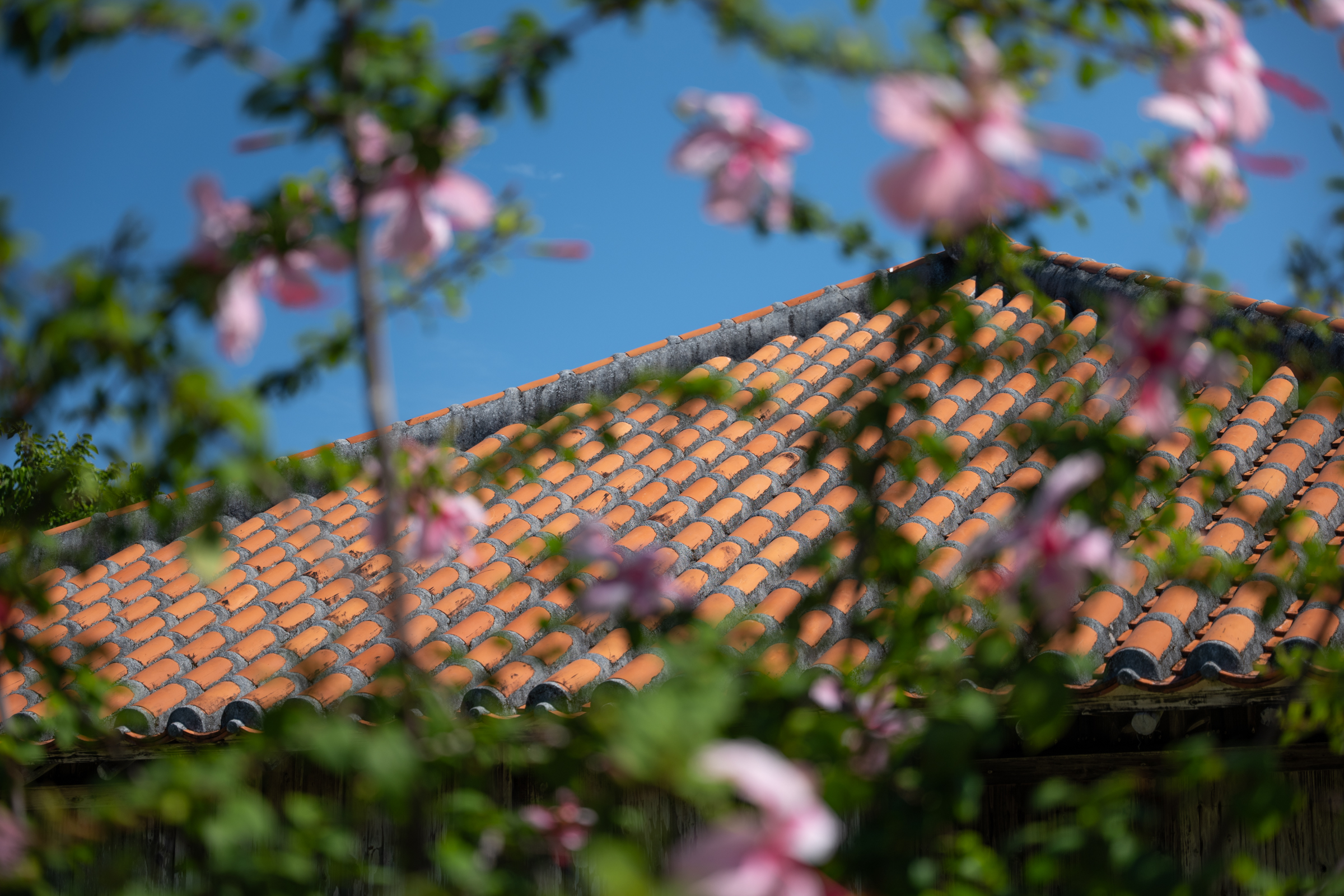
Taketomi Island (or Taketomijima) is located in the far south of Okinawa prefecture, just 250 miles east of Taiwan. While Okinawan culture broadly describes the island, Taketomi Island is perhaps more specifically tied to the ancient Ryukyu culture that existed here before its annex by Japan.
We decided to honeymoon on Taketomi Island (while spending a little time on its larger Yaeyama Island neighbor, Ishigaki) for around 6 days and left with an entirely new appreciation of Japan. This was our first time anywhere in Okinawa, and while we were aware Okinawan culture was different than prototypical Japanese culture, Taketomi Island's old charm and cultural importance left us feeling like we'd discovered a secret in Asia's most-visited country.
After flying into Ishigaki (ISG) airport from Osaka's Kansai airport (KIX) we took a short bus to Ishigaki's popular port that serves the rest of the Yaeyama Islands by boat.
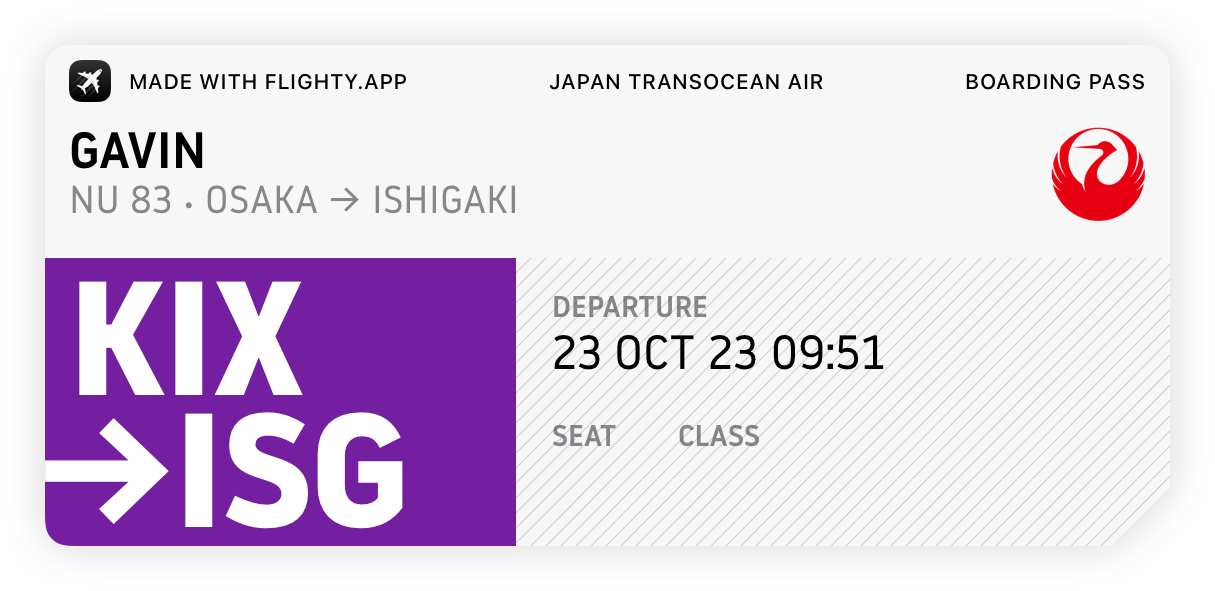
Our hotel, Hoshinoya Taketomi Island (read my review, here – the property is amazing) provided us with a map of the island. As you can see, it's relatively small and is fairly easily navigable on foot or by bicycle.
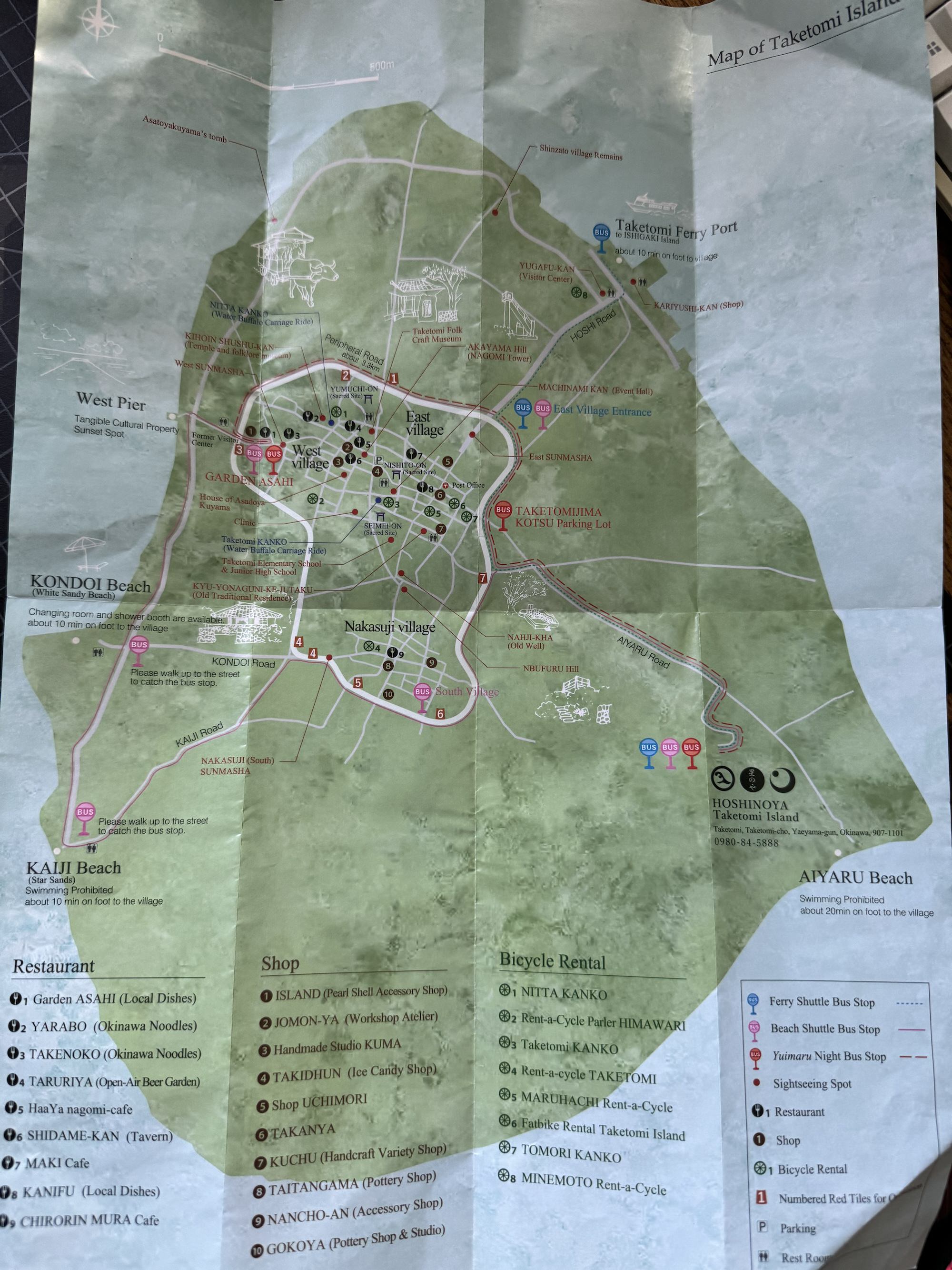
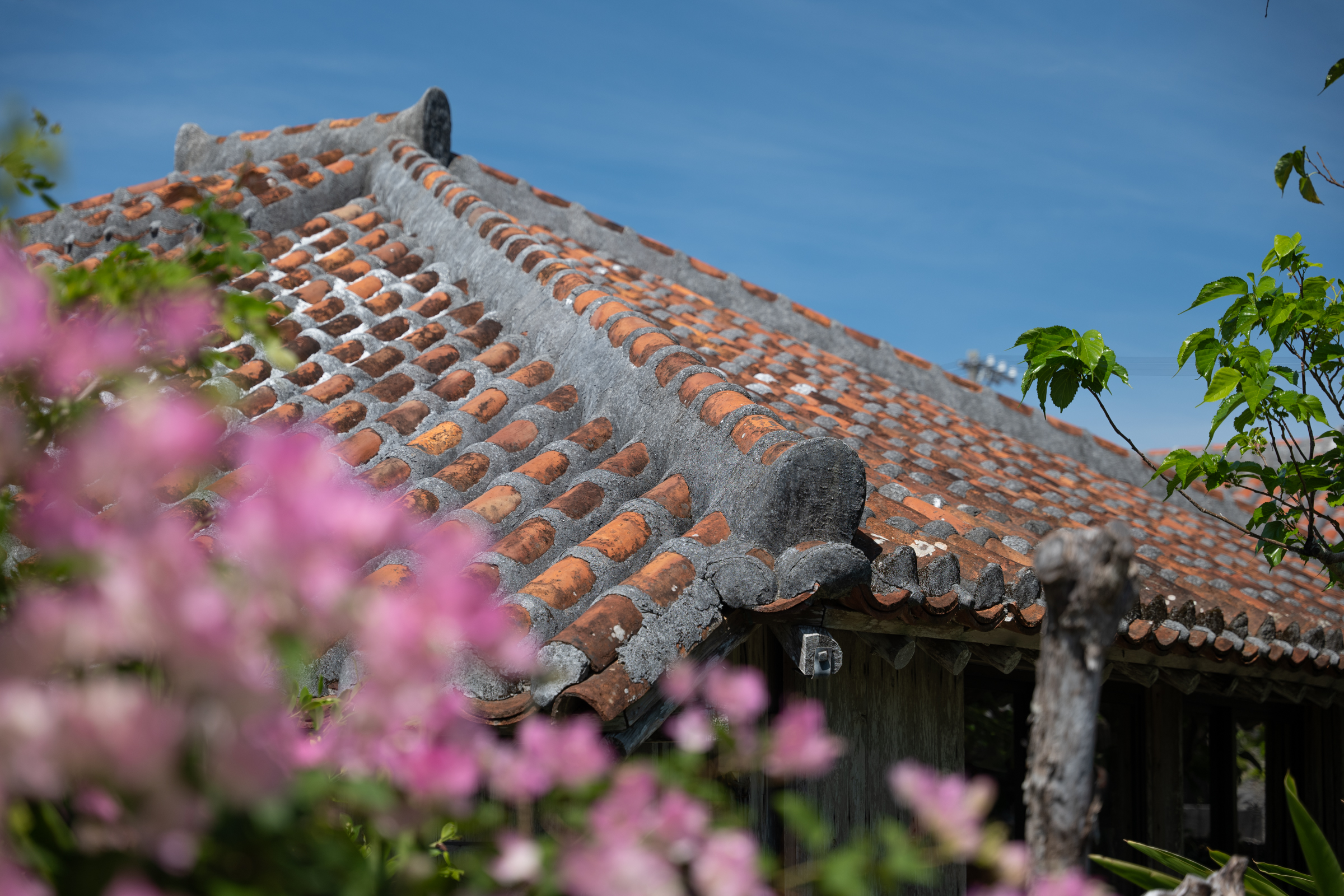
What's obvious as soon as you step off the ferry from Ishigaki and onto Taketomi Island is the authenticity and cultural preservation of the original Ryukyu people. If you plan to visit the island you more than likely already know that, and it's essentially why most native Japanese visit as well.
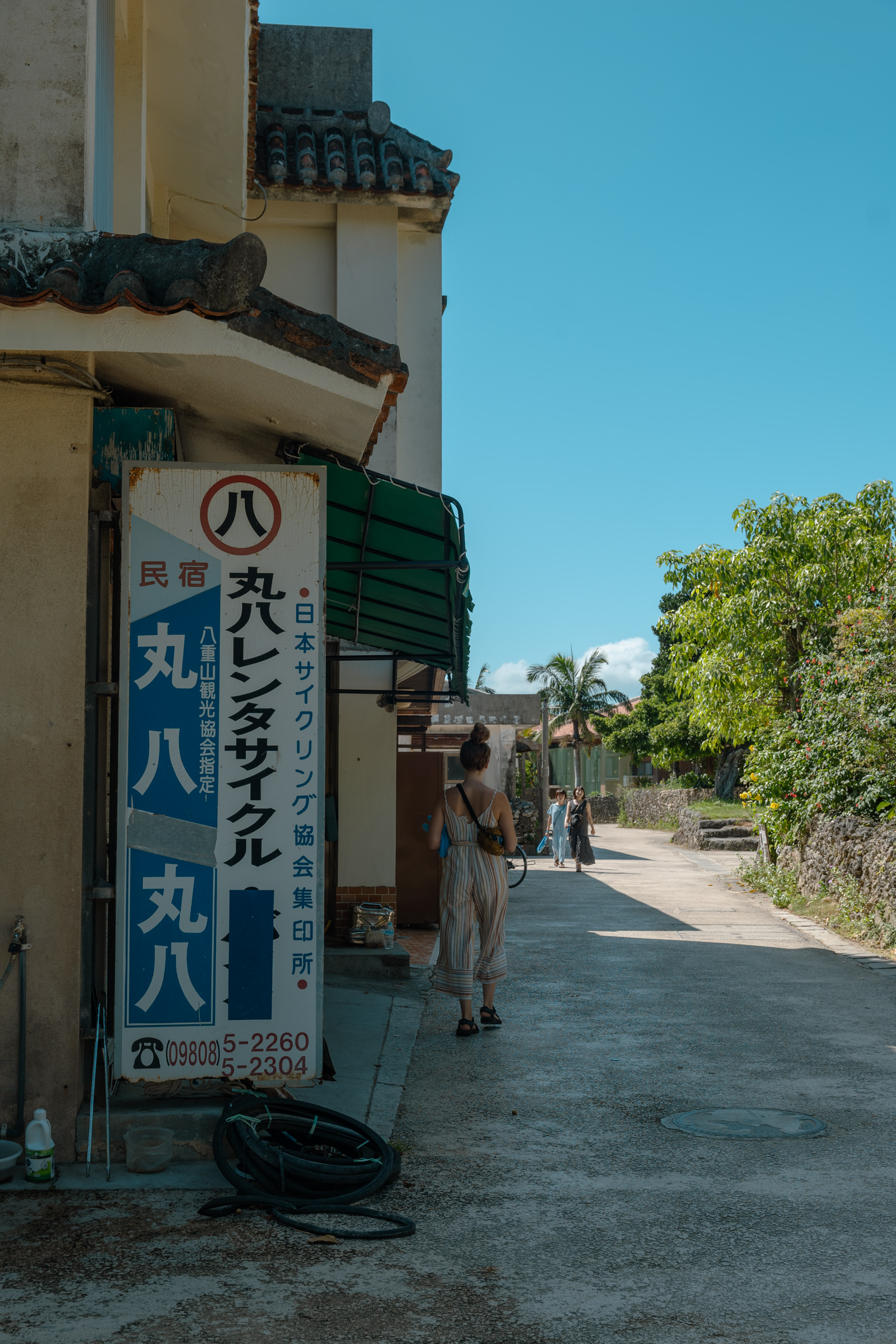
Most of the "non-authentic" looking parts of Taketomi are located relatively close to the ferry port in the island's East Village. Still, a uniquely historical Japanese charm is pervasive.
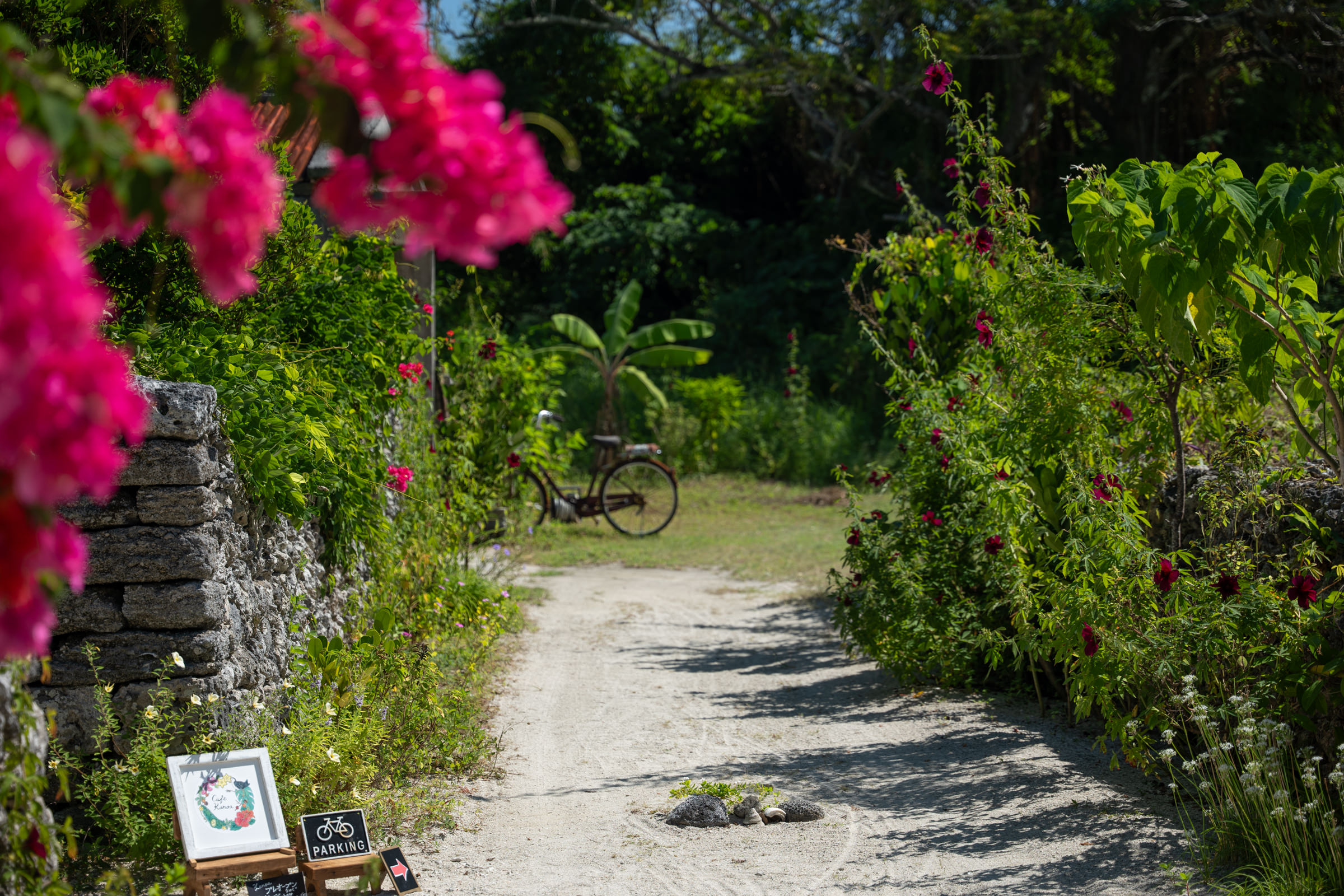
I hate to be overly cliché by saying Taketomi is on "island time", but the island We quickly learned that despite Google Maps, Tabelog, and social media pages showing certain restaurants were open, sometimes they just weren't.
And that's more than OK. I would not be prioritizing work either if I lived here. We used Hoshinoya's concierge to help organize meals and clarify hours via phone and it worked well. There are only a handful of restaurants on the island, so make sure you plan ahead or you could absolutely be stuck without something to eat. There are no conbinis or markets on the island, either, so stock up on Ishigaki before taking the ferry over, making extra sure to sample all the variants of Okinawan's famous beer, Orion.
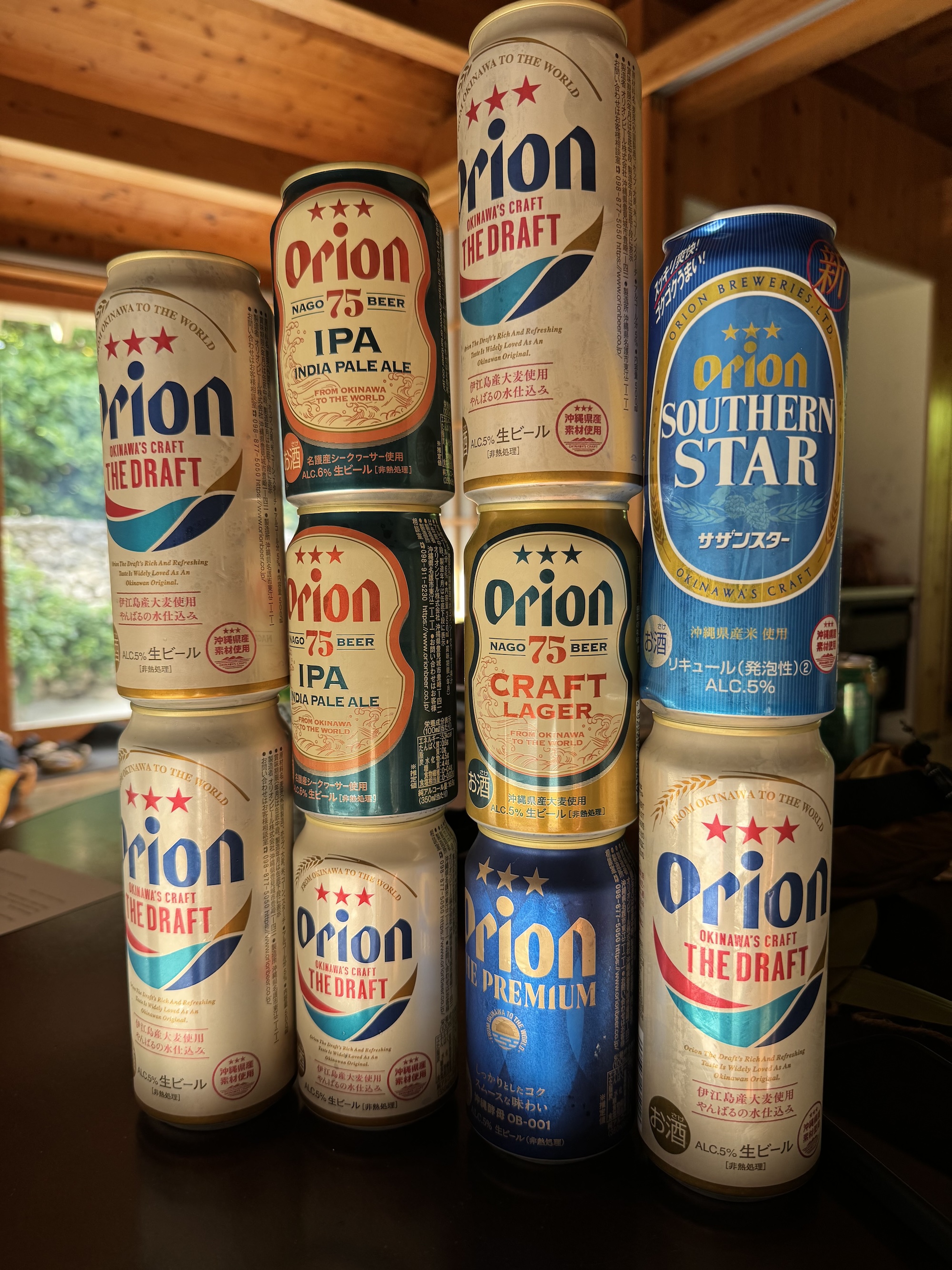
Shidame-kan was the only restaurant we were able to grab lunch at multiple times. Located in Taketomi's downtown, it is a traditional Okinawan restaurant that serves up fantastic food, and cold beer and sake, and even Okinawa's famous Blue Seal ice cream, which is warmly welcomed after spending time in the island's heat and humidity.


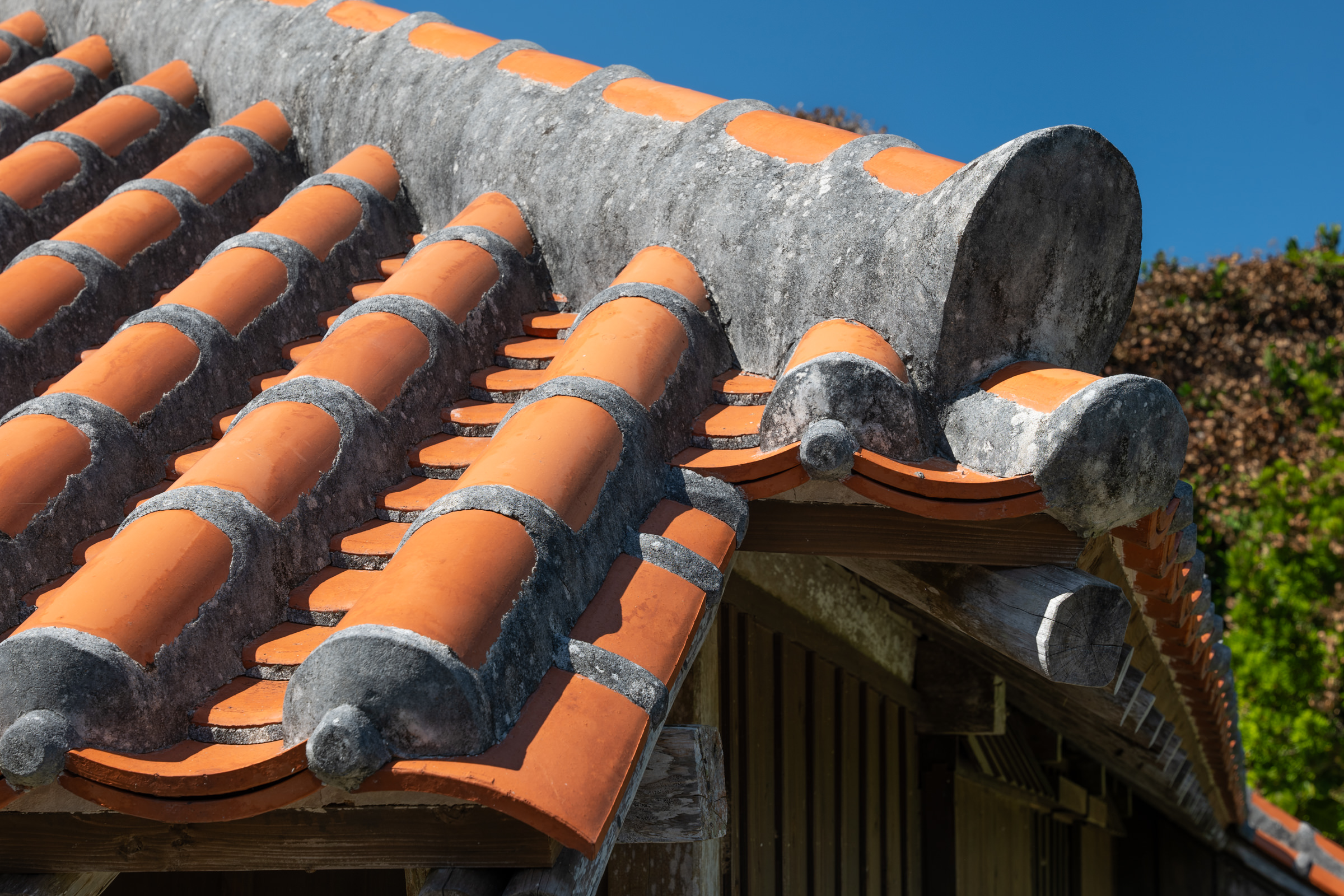
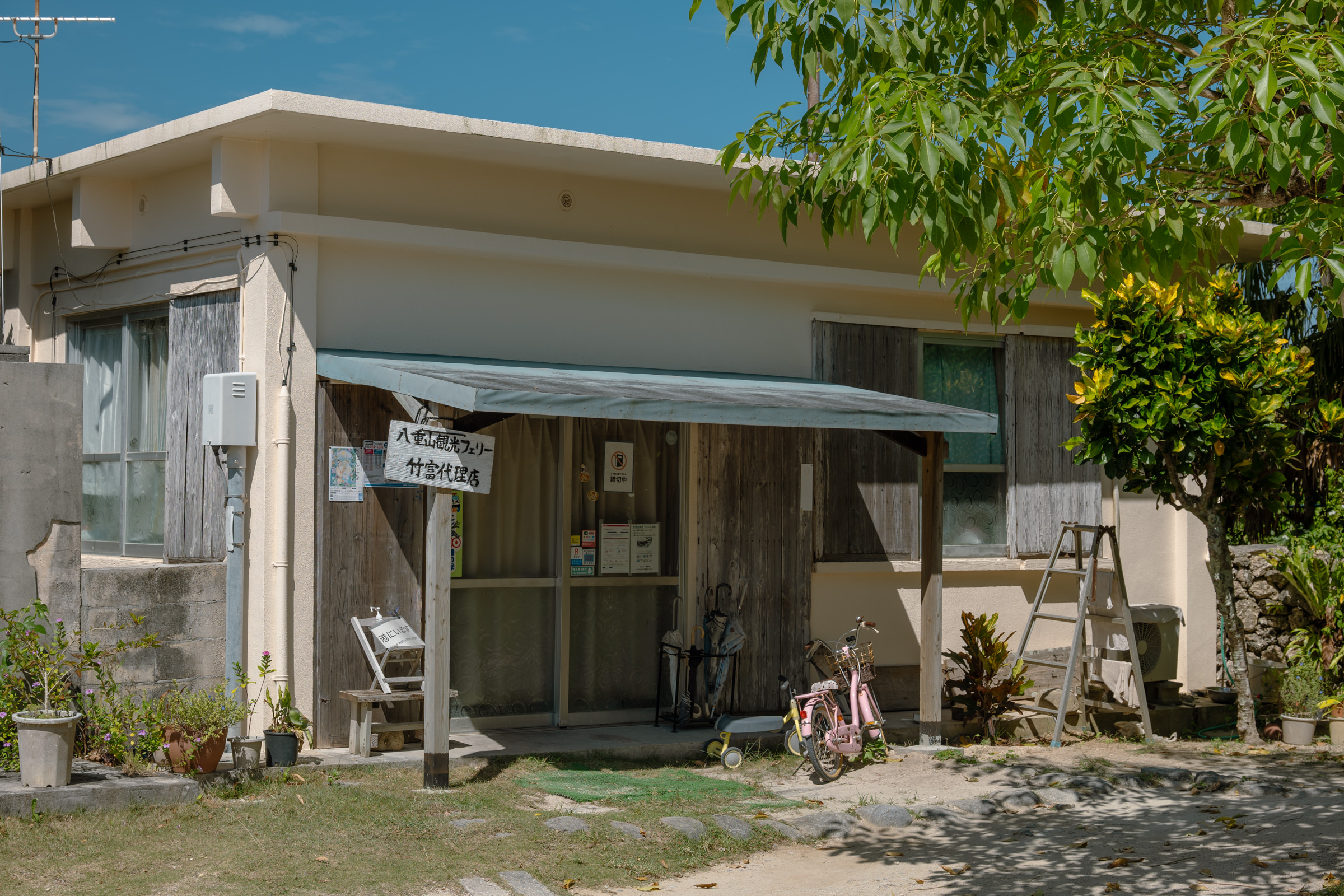
While much of Taketomi's daily population are visitors, it's important to remember people live on the island full-time as well. While there's just enough infrastructure to support tourism, many residential homes are mixed directly in with these businesses. Showing respect and privacy to the island's locals is extremely consequential. Most buildings have the same, traditional Okinawan orange-tiled roofs, so differentiating between commercial or residential is important before potentially venturing on property.
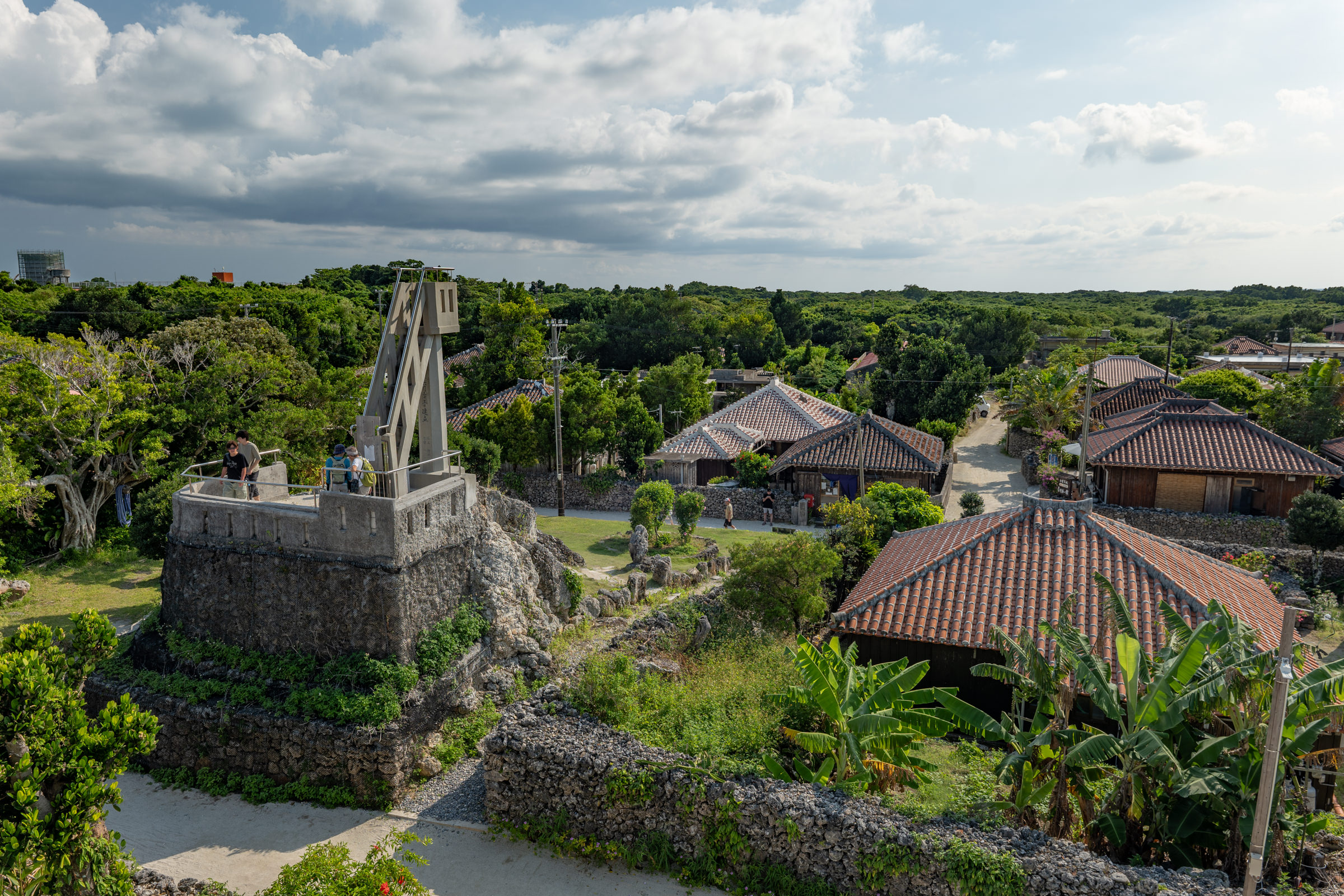
Taketomi, and some of the surrounding Yaeyama islands, are known for using water buffaloes as working animals and tourist attractions. Head to the island's center during midday to see these animals pulling easily excitable tourists at a snail's pace around town – Taketomi's equivalent to San Francisco's cable cars.
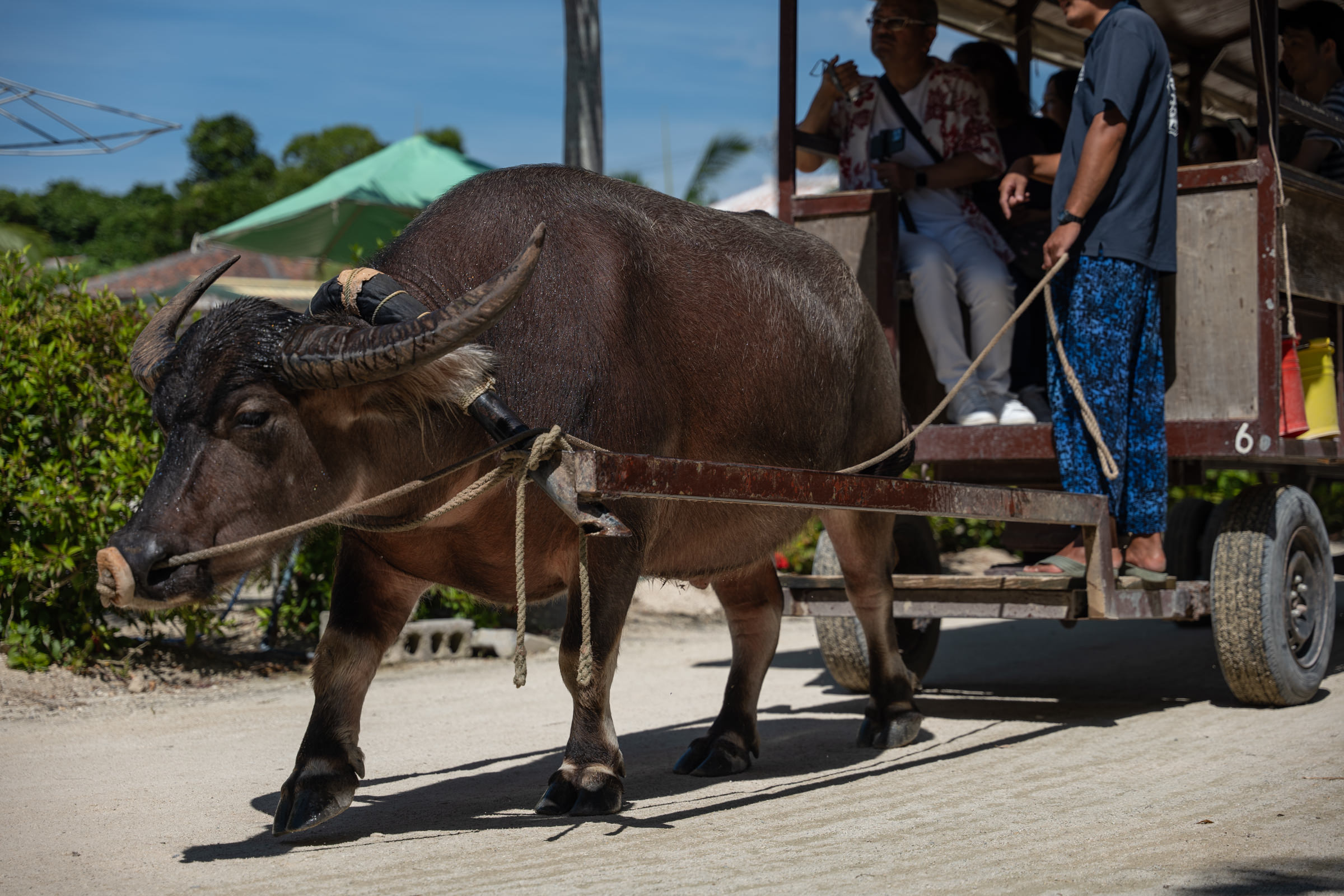
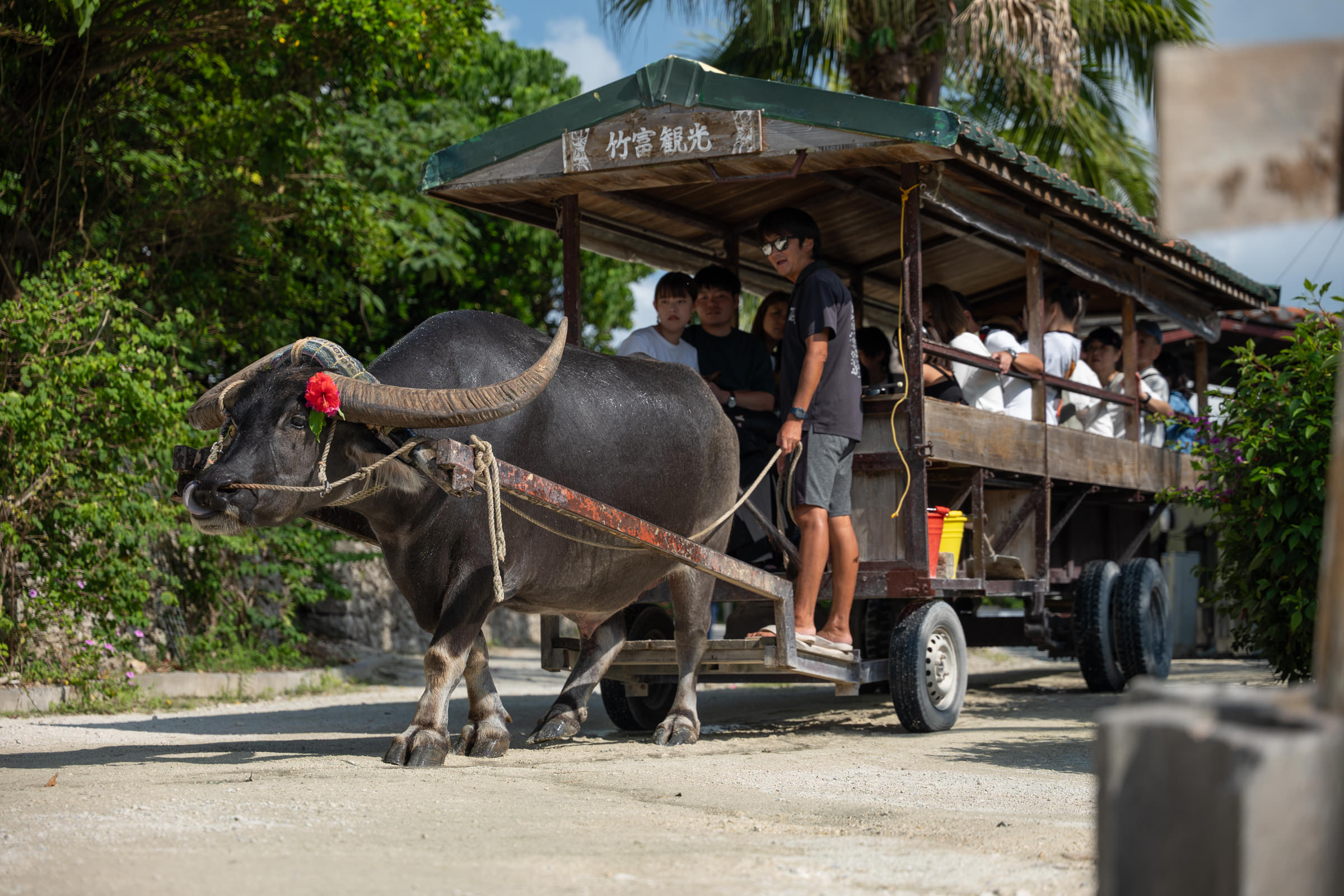
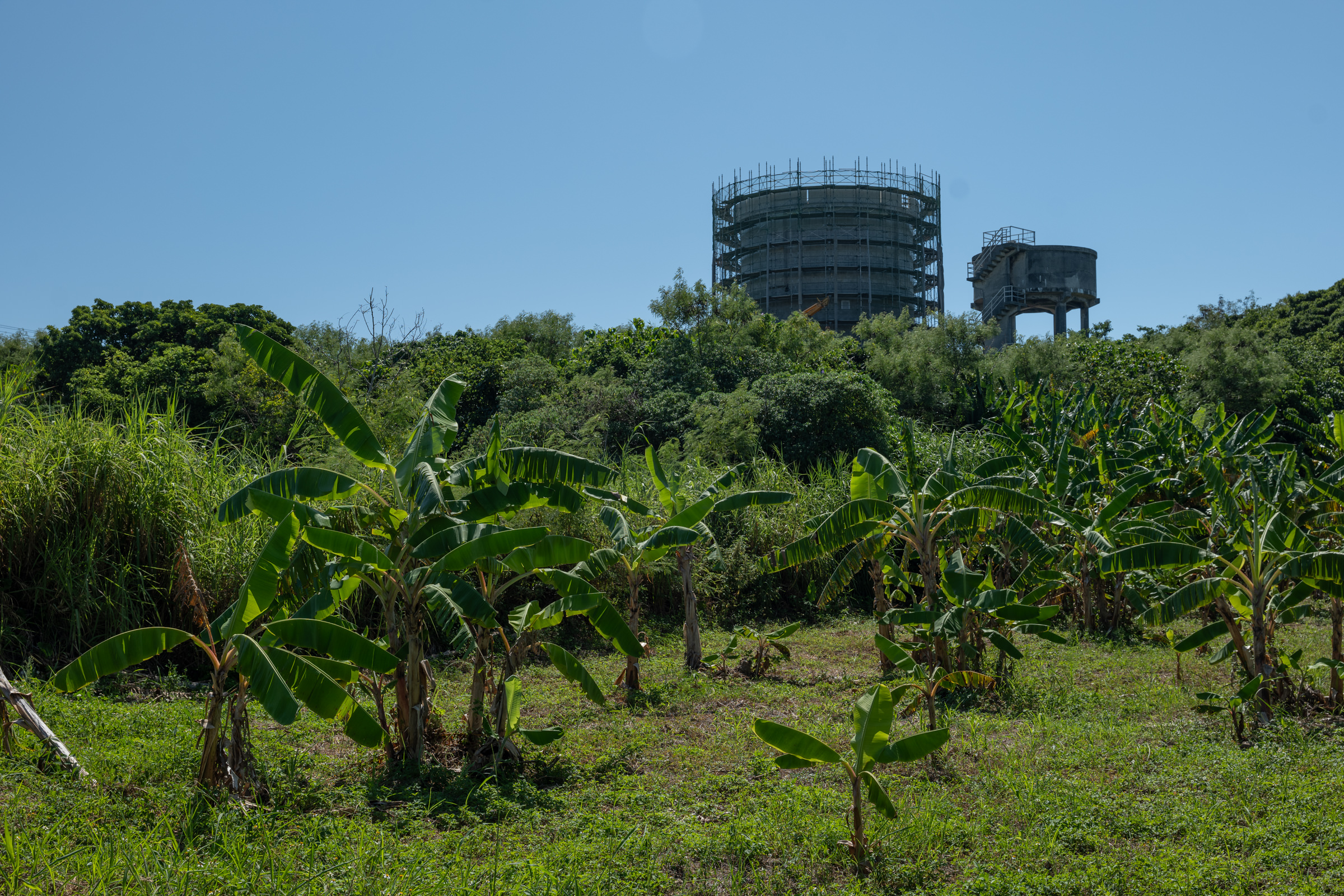
Perhaps one of my favorite things about Taketomi and the Okinawan islands is Shisa (シーサー), which are traditional Ryukyun cultural artifacts that are typically meant to be placed in front of one's home for protection from evil spirits. You will see these throughout Okinawa's many islands, but they felt more pervasive on Taketomi Island. They were our favorite souvenirs from this trip as well, and we wound up buying multiple on this trip and on our impromptu trip to the Okinawan mainland this past April.
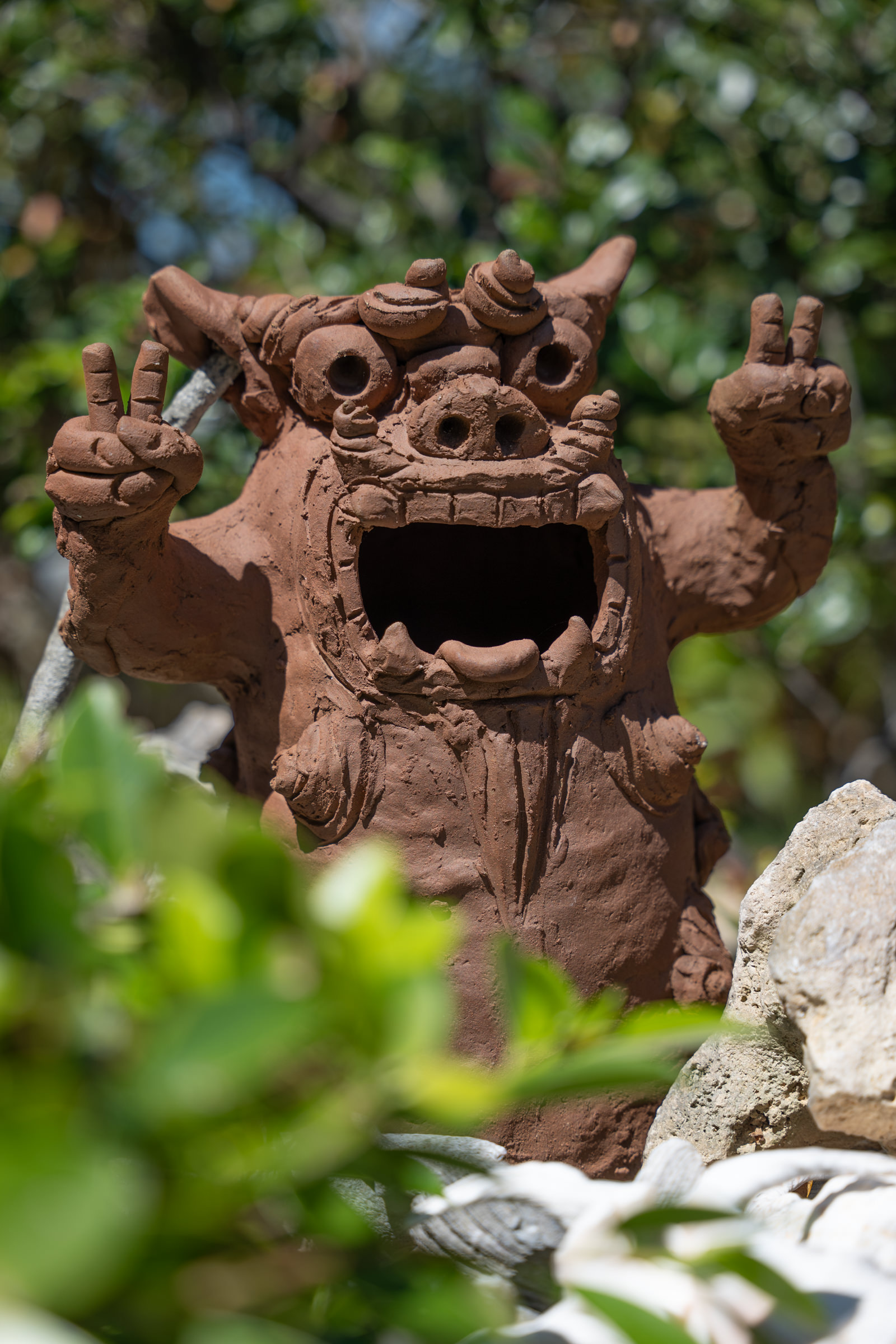
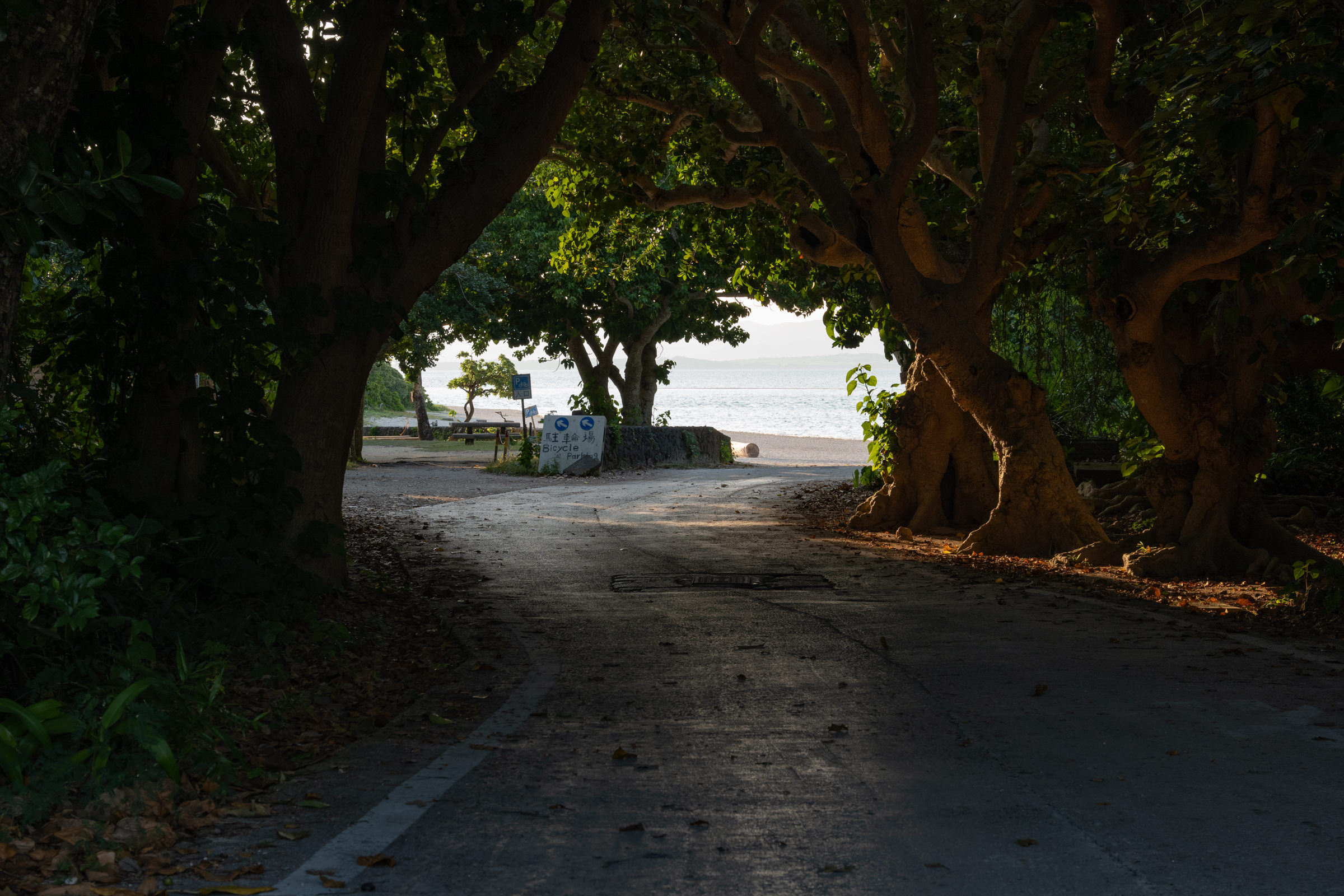
Kondoi Beach. This beach was life-changing for me. So much so that we didn't go to a single other beach our entire 6 days on the island. I've been mostly averse to the "lie-around-and-do-nothing-on-a-tropical-beach" type of places that my wife loves. I've always felt like time traveling was better spent on experiences and doing "stuff", but Kondoi Beach on Taketomi Island's West side was able to get me to enjoy doing nothing like nothing else before.

The water was warm and shallow. The sand fine and white. And you could truly walk out for what felt like a hundred feet to a sandbar and only be waist-high in water. Despite being known as the island's best beach (all other beaches don't allow swimming as the water can be rough) it never got too crowded. The beach never felt cramped or too loud, and always had umbrellas to rent. Bathrooms and changing rooms are on-site, as well.

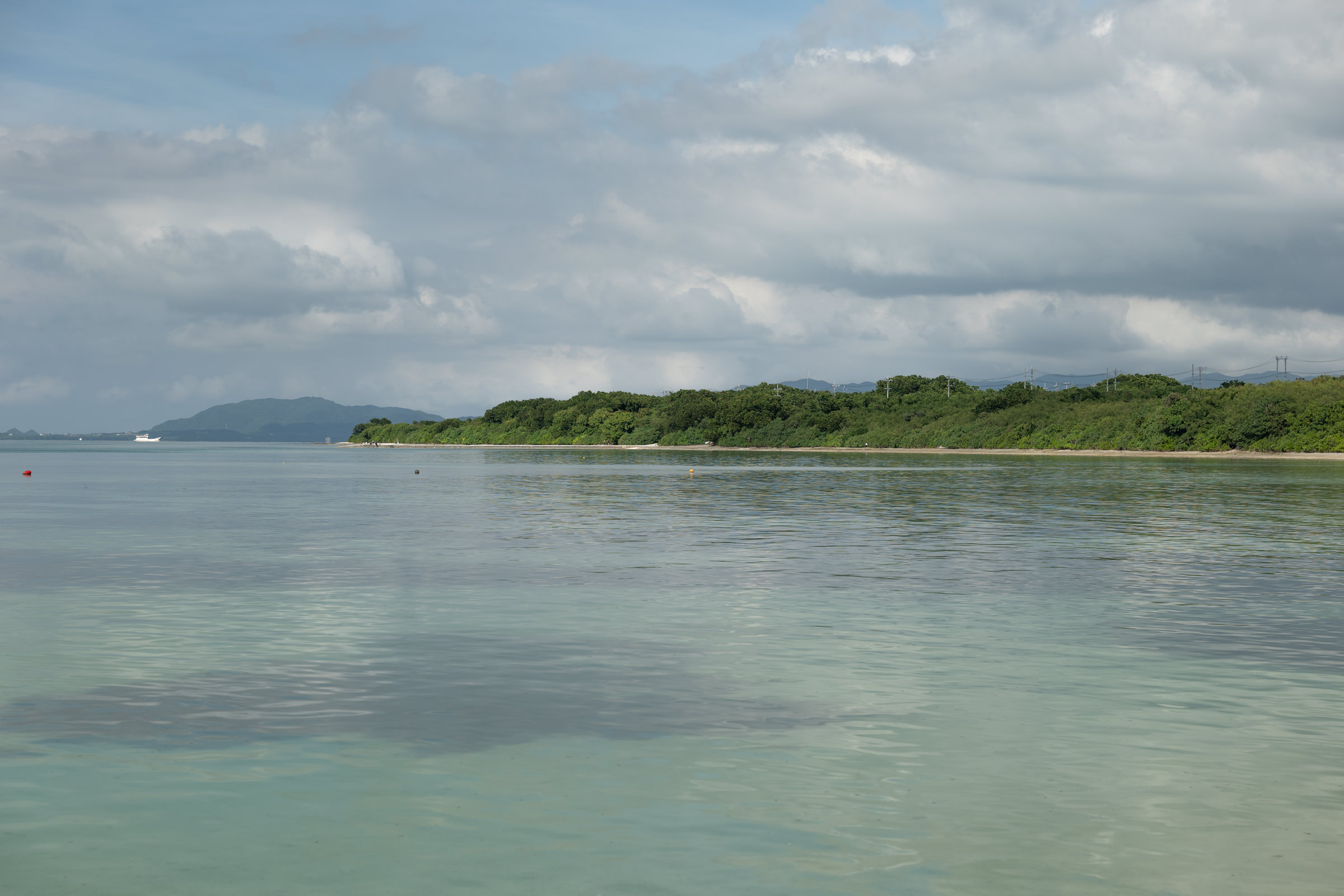
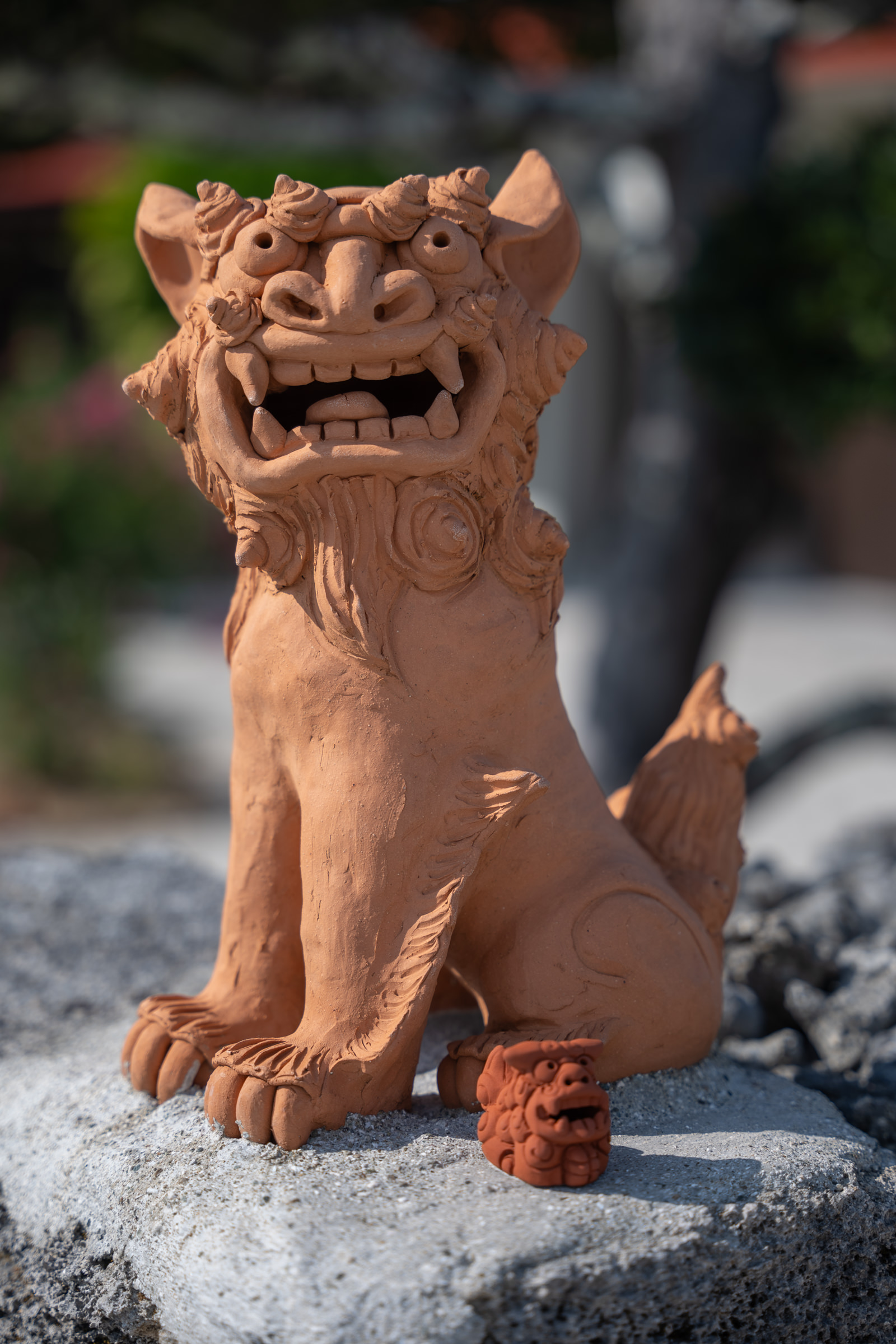
It's hard to put into words our time in Taketomi – as I'm writing this months later, I'm so thankful and honored we got to experience this side of Japan. Sure, places like Tokyo, Osaka, Hiroshima, Kyoto, and even mainland Okinawa are fantastic, but a place like Taketomi Island and the Yaeyama Islands are something that I think most travelers wouldn't even think to visit – that's not a flex on my part, simply an observation to continue to maybe dig for those "less traveled" places wherever you may be going.


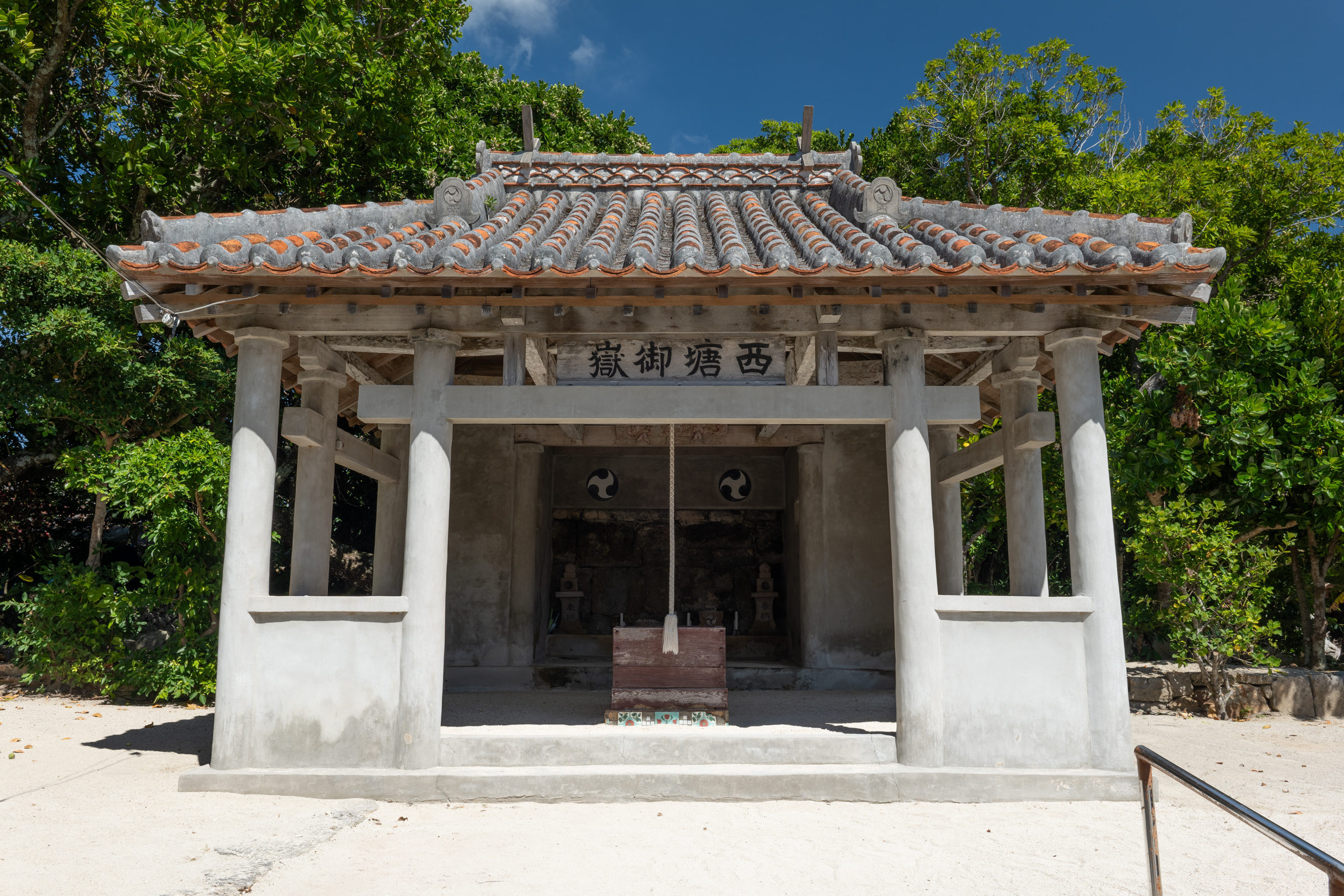

While we felt our experience on Taketomi Island was nothing short of perfect, I wouldn't recommend staying more than a couple of days unless you're staying at the aforementioned Hoshinoya property. The lack of easily obtainable food is no joke if your accommodation doesn't provide it, and if you're staying in one of the few other lodging options downtown you may struggle to get to the beaches and elsewhere on the island without Hoshinoya's bus service at certain hours. Most bike rental places close around 4 or 5 as well.
Despite some understandable inconveniences, I think Taketomijima is a can't-miss experience for people who consider themselves travelers looking for a new story to find themselves wrapped in. 2-3 days for most would be suitable, and the island is somewhat easy to get to thanks to Ishigaki Island having flights from Tokyo and Osaka. Hop on the ferry from Ishigaki and you're in arguably the most culturally authentic place in all of Japan.

